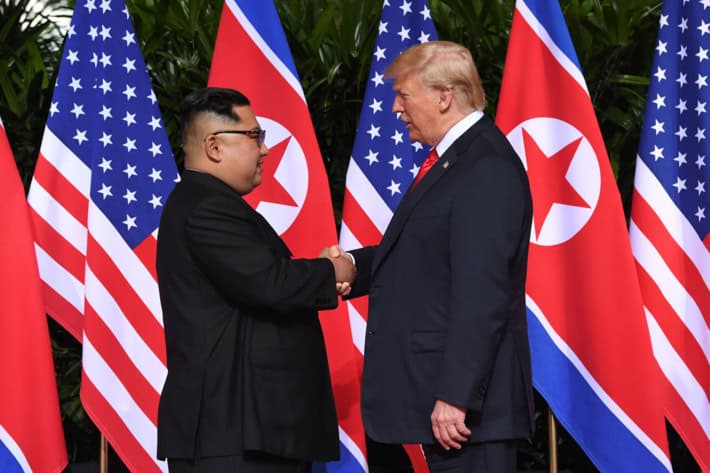The breakthrough in the Korean Peninsula, if the denuclearization completes successfully, could ultimately shift focus to the other nuclear hotspot in Asia: South Asia.
And, as in the Korean Peninsula, the United States and China could play a key role in a South Asian breakthrough.
For the leaders in Islamabad and New Delhi, Korea offers a two-fold challenge: Can Pakistanis and Indians do this? And the question of denuclearization.
To be sure, unlike the two Koreas, Pakistan and India are two different nations, with two different histories and national stories, and some shared attributes like all other neighbors. But the Pak-India conflict offers some similarities to the Korean conflict in terms of complexity and insolvability. Both conflicts involve emotions, ideologies, and nuclear weapons. China and the United States are important outside players in both cases; both conflicts appear impossible to resolve, and both have wider implications for the region and the world.
Trump’s gamble in North Korea shows that complex conflicts can be resolved.
President Trump has stunned media pundits, think-tanks and the foreign policy community in the United States and around the world with his Korea breakthrough. It is a historic diplomatic feat. Trump, who is not a politician, brought new thinking into an old, difficult dispute and achieved what politicians, diplomats and military commanders could not. Of course, it is too early to judge, and everything depends on the denuclearization process, but the progress is substantial.
So, can the breakthrough on Korean Peninsula be replicated in South Asia?
The pressure should increase on politicians in South Asia to do what’s best for their peoples and for world peace. Denuclearization may not be a possibility or even an urgency in South Asia since both Pakistan and India are largely responsible pro-West powers, unlike North Korea. But a nuclear freeze, improved security for strategic assets, future reductions in nuclear arsenal, and a permanent resolution to Kashmir conflict are distinct possibilities.
However, South Asia cannot see a thaw like the Korean Peninsula without international intervention.
Indian and Pakistani leaders have failed in making peace and resolving Kashmir conflict. While Pakistani policy has its own set of mistakes, India bears a larger chunk of responsibility for the stalemate. Unlike the Korean Peninsula, the balance of power in South Asia favors the larger country, India. Being several times larger than Pakistan in size, population, military and economy, India can afford to expend political capital to give Pakistan the necessary security assurances for peace, and that is what Pakistan really wants, apart from Kashmir conflict resolution. India does not face any threat of aggression from Pakistan. Kashmir is the mother of conflicts in South Asia. The mess in Afghanistan is also linked to Kashmir. India’s losses in Kashmir are bigger than Pakistan’s. A deployment of half-million demoralized Indian soldiers confronts a Kashmiri population than rejects Indian presence. Seventy years down the road, the popular pushback against India in Kashmir is stronger than ever.
Instead of showing the necessary flexibility for peace, India prolonged Kashmir dispute, opened new fronts, like invading and dismembering Pakistan in 1971; used Afghan soil for proxy warfare as early as 1950s, and introduced nuclear weapons to the region.
But just like the Korean Peninsula, peace in South Asia is not possible without international intervention. The energy that President Xi and President Trump put into the North Korea deal is exactly what South Asia needs. Such an effort can avert a nuclear war between Pakistan and India, free up the resources of both countries to play their roles in the global economy, end the humanitarian tragedy in Kashmir, and help in ending the Afghan war. A win-win can bring peace to the region and protect Chinese and American interests.
The United Nations is already a party to the Pak-India conflict. UN observers are deployed on the two sides of the temporary ceasefire line in Kashmir.
But this is not enough. South Asia may need a role for the United States and China.
The Korea breakthrough would not have been possible without Presidents Trump and Xi Jinping working together to bring President Kim Jong-un to the table and encouraging South Korean President Moon Jae-in to reciprocate.
The Xi-Trump partnership should not stop in the Korean Peninsula. Let this model of cooperation in international relations expand. South Asia can be a good testing ground.














